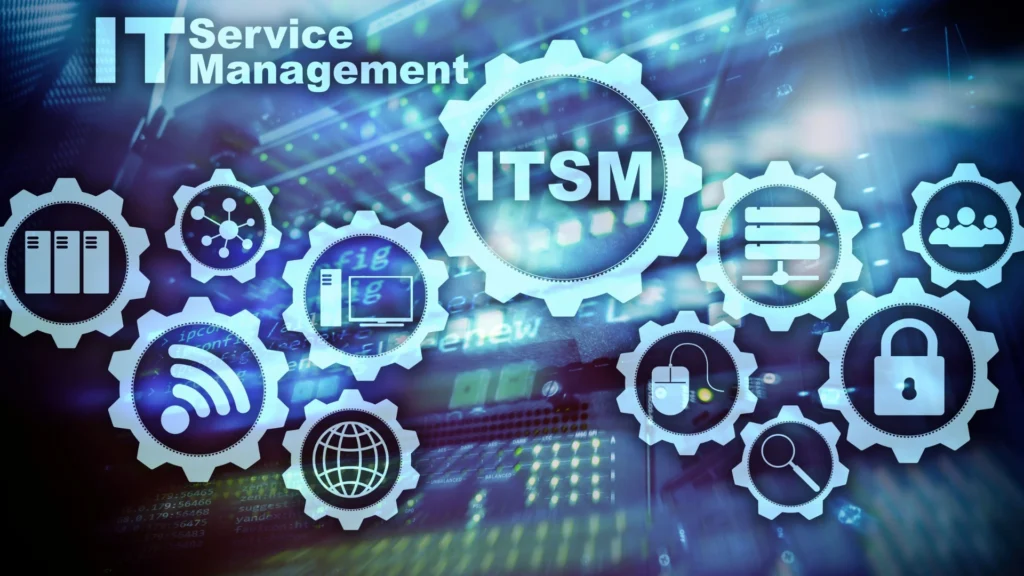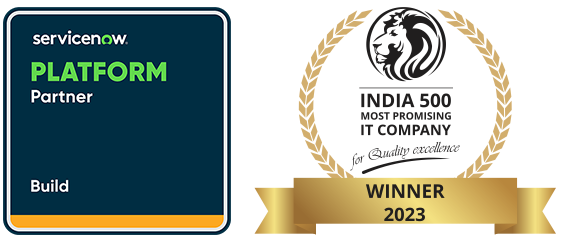Elevate Your GCC’s Service Standards: Achieving Consistent High-Quality Delivery with ServiceNow
Subscribe to our newsletter!
Have you ever evaluated the cost of missed SLAs and variable service standards on your GCC’s reputation?
In the competitive world of Global Capability Centers (GCCs), delivering consistent, high-quality service isn’t just an expectation—it’s a necessity. Yet, without standardized metrics and real-time insights, maintaining these standards can be a struggle, impacting both performance and reputation.
The Impact of Inconsistent Service Delivery
Inconsistent service delivery leads to unmet SLAs, dissatisfied stakeholders, and missed opportunities to demonstrate the true value of your GCC. The repercussions are far-reaching:
- Unmet SLAs: Failure to meet Service Level Agreements (SLAs) can result in penalties and loss of trust.
- Dissatisfied Stakeholders: Inconsistent service can lead to frustration among stakeholders, affecting long-term relationships.
- Missed Opportunities: Without reliable service delivery, GCCs miss out on showcasing their full potential and value.
How ServiceNow Can Transform Your Service Standards


ServiceNow Can Transform Your Service Standards
ServiceNow’s Service Delivery Management platform provides the tools needed to standardize performance metrics, enable real-time tracking, and ensure SLA compliance. Kumori Technologies empowers GCCs to leverage ServiceNow, aligning teams to consistently meet service expectations.
Key ServiceNow Modules and Their Benefits for GCCs
- ServiceNow Customer Service Management (CSM): CSM enables GCCs to deliver seamless, high-quality customer service across all touchpoints, ensuring standardized service delivery and streamlined support.
Benefits for GCCs:
- Centralizes case management and incident tracking.
- Automates workflows to maintain consistent service standards.
- Improves response times, directly impacting SLAs and customer satisfaction.
- ServiceNow IT Service Management (ITSM): ITSM offers core service management capabilities, including incident, problem, and change management, enabling GCCs to deliver IT services at high quality and efficiency.
Benefits for GCCs:
- Provides real-time monitoring and incident prioritization.
- Tracks SLAs to ensure performance expectations are met.
- Delivers consistent, high-quality IT services.
- ServiceNow Performance Analytics: Performance Analytics provides in-depth insights into service metrics, helping GCCs track performance against SLAs, KPIs, and other critical metrics to ensure service quality.
Benefits for GCCs:
- Offers real-time dashboards and predictive analytics.
- Allows managers to proactively address performance issues.
- Facilitates data-driven improvements in real time.
- ServiceNow Service Level Management (SLM): SLM enables GCCs to define, monitor, and manage SLAs across all service interactions, ensuring consistent delivery according to pre-defined standards.
Benefits for GCCs:
- Provides visibility into SLA status and performance.
- Helps proactively meet or exceed SLA expectations.
- Enhances accountability across teams.
- ServiceNow Operational Technology Management (OTM): OTM provides GCCs with a unified view of operational metrics and service health, helping to manage the quality and reliability of core operational services.
Benefits for GCCs:
- Offers real-time operational insights.
- Ensures high service standards across different functions.
- Maintains consistency in service delivery.
- ServiceNow Incident and Problem Management: Incident and Problem Management modules within ITSM help streamline the resolution of issues, reducing the risk of SLA breaches and improving overall service quality.
Benefits for GCCs:
- Standardizes the approach to handling incidents.
- Prevents recurring issues, reducing downtime.
- Ensures reliable and efficient service delivery.
Here are some case studies that dwell in the successful application of ServiceNow.
Key Metrics for High-Quality Service Delivery
Key Metrics for High-Quality Service Delivery
Tracking the right metrics is crucial for ensuring high-quality service delivery in GCCs. Here are some key metrics to consider:
- Service Level Agreement (SLA) Compliance: Measures the percentage of SLAs met within the agreed time frame. Significance: Ensures that service commitments are being honored, which is critical for maintaining stakeholder trust and satisfaction.
- Incident Resolution Time: The average time taken to resolve incidents. Significance: Shorter resolution times indicate efficient service management and help in maintaining high service quality.
- First Contact Resolution (FCR) Rate: The percentage of incidents resolved during the first contact with the service desk. Significance: High FCR rates improve customer satisfaction and reduce the workload on support teams.
- Customer Satisfaction (CSAT) Score: A measure of customer satisfaction with the service provided, often collected through surveys. Significance: Directly reflects the quality-of-service delivery and helps identify areas for improvement. Significance: Directly reflects the quality-of-service delivery and helps identify areas for improvement.
- Mean Time to Repair (MTTR): The average time taken to repair a system or service after a failure. Significance: Lower MTTR indicates effective incident management and minimizes downtime.
- Change Success Rate: The percentage of changes implemented without causing incidents or requiring rollback. Significance: High change success rates indicate effective change management processes.
- Service Request Fulfillment Time: The average time taken to fulfill service requests. Significance: Ensures that service requests are handled promptly, contributing to overall service efficiency.
- Problem Resolution Time: The average time taken to resolve problems that cause recurring incidents. Significance: Effective problem management reduces the frequency of incidents and improves service reliability.
- Operational Health Metrics: Metrics that provide insights into the overall health of IT operations, such as system uptime and performance.Significance: Ensures that IT infrastructure is reliable and supports consistent service delivery.
- Performance Against Key Performance Indicators (KPIs): Tracks performance against predefined KPIs related to service delivery, such as response times, resolution times, and customer satisfaction.Significance: Helps in monitoring and improving service delivery processes.
- Utilization of ServiceNow Modules: Measures the extent to which different ServiceNow modules are being used.Significance: Ensures that the platform is being utilized effectively to support service delivery goals.
- Cost per Ticket: The average cost incurred to resolve an incident or service request.Significance: Helps in managing and optimizing the cost-efficiency of service operations.
- Backlog of Incidents and Requests: The number of unresolved incidents and service requests. Significance: A high backlog can indicate resource constraints or inefficiencies in the service process.
- Employee Productivity Metrics: Metrics that measure the productivity of employees involved in service delivery, such as the number of tickets handled per agent. Significance: Ensures that the workforce is effectively contributing to service delivery goals.
- Predictive Analytics Metrics: Metrics derived from predictive analytics to forecast potential issues and performance trends. Significance: Allows proactive management of service delivery and helps in preventing future problems.
How ServiceNow Modules Work Together
By integrating tools like Performance Analytics for real-time insights, Service Level Management for SLA tracking, and Customer Service Management for seamless service delivery, GCCs can achieve standardized, high-quality service delivery that meets HQ expectations. Additionally, ITSM and OTM solutions enhance operational reliability and ensure that service quality is maintained consistently across all departments and locations.
Benefits of ServiceNow for GCCs
- Consistent, standardized metrics across teams and regions.
- Real-time performance insights for proactive adjustments.
- SLA tracking to ensure service expectations are always met.
- Enhanced accountability and transparency in service delivery.
Ready to Elevate Your GCC’s Service Standards?
Partner with us. We specialize in ServiceNow solutions for GCCs, helping you create a high-performance environment where consistent, high-quality service is the standard.
Related Articles


Tackling Hybrid Workforce Challenges: A GCC Leader’s Guide to Productivity and Collaboration
As Global Capability Centers (GCCs) adapt…


ServiceNow Workflow Data Fabric: Transform Workflows with AI & Real-Time Data
In an era defined by digital transformation, businesses face mounting pressure…


Top 7 ServiceNow Trends to Watch for in 2025
As we move further into 2025, ServiceNow continues to evolve as the definitive platform…






